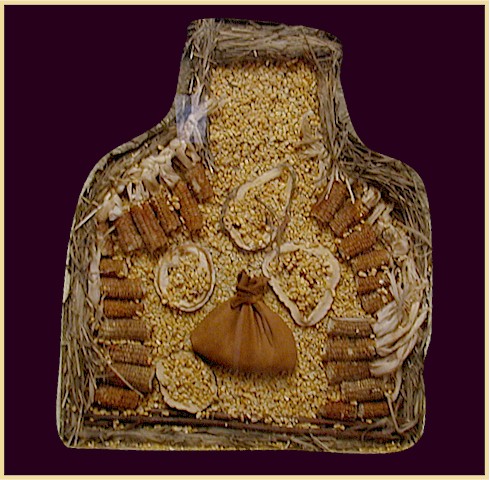Cache Pit Continued ...
Families had various numbers of cache
pits. Some dug inside of the lodge and
some dug outside of the families lodge.
These pits were also used for cool storage
in the summers.

CONSTRUCTION & BOTTOM SKIN COVERING
Construction: "Two women worked
together in a cache pit, one helping the other out." "The digging
and storing of a cache was women's work."
Bottom Skin Covering:
"The bottom of small cache pits were covered
with a small circular piece of skin.
The skin was cut to fit the bottom and was
laid directly on the grass matting that
covered the willow floor. If the cache
pit was large, we fitted into the bottom the
skin cover of a bull boat, with the willow
frame removed." "A Trench for the
puncheon cover of the mouth was the very
last part of the cache pit to be dug."
STORING OF THE CACHE PIT
Strings of Corn: These were the first to be placed in the cache pit.
They were placed snugly against the wall of the cache pit, on the bottom
skin covering, with the tips of the ears pointing inwards. These
strings of corn had been dried on the stage.
Shelled or Loose Corn: Second was the loose corn.
The corn was poured into the cache pit until it was level with the
strings of corn but not covering them. This corn had been threshed
in a booth under the drying stage. The smaller ears of dried corn
were threshed.
Dried Squash: The squash was coiled and piled up in
the center of the cache pit upon the dried corn. The squash was
sliced, skewed on a spit, and dried on the stage.
Beans: The beans were sometimes placed in cache pits
that were outside of the lodges. The beans were put in a bag or
bags. The bags were made of skin and about as long as one's arm.
| 
